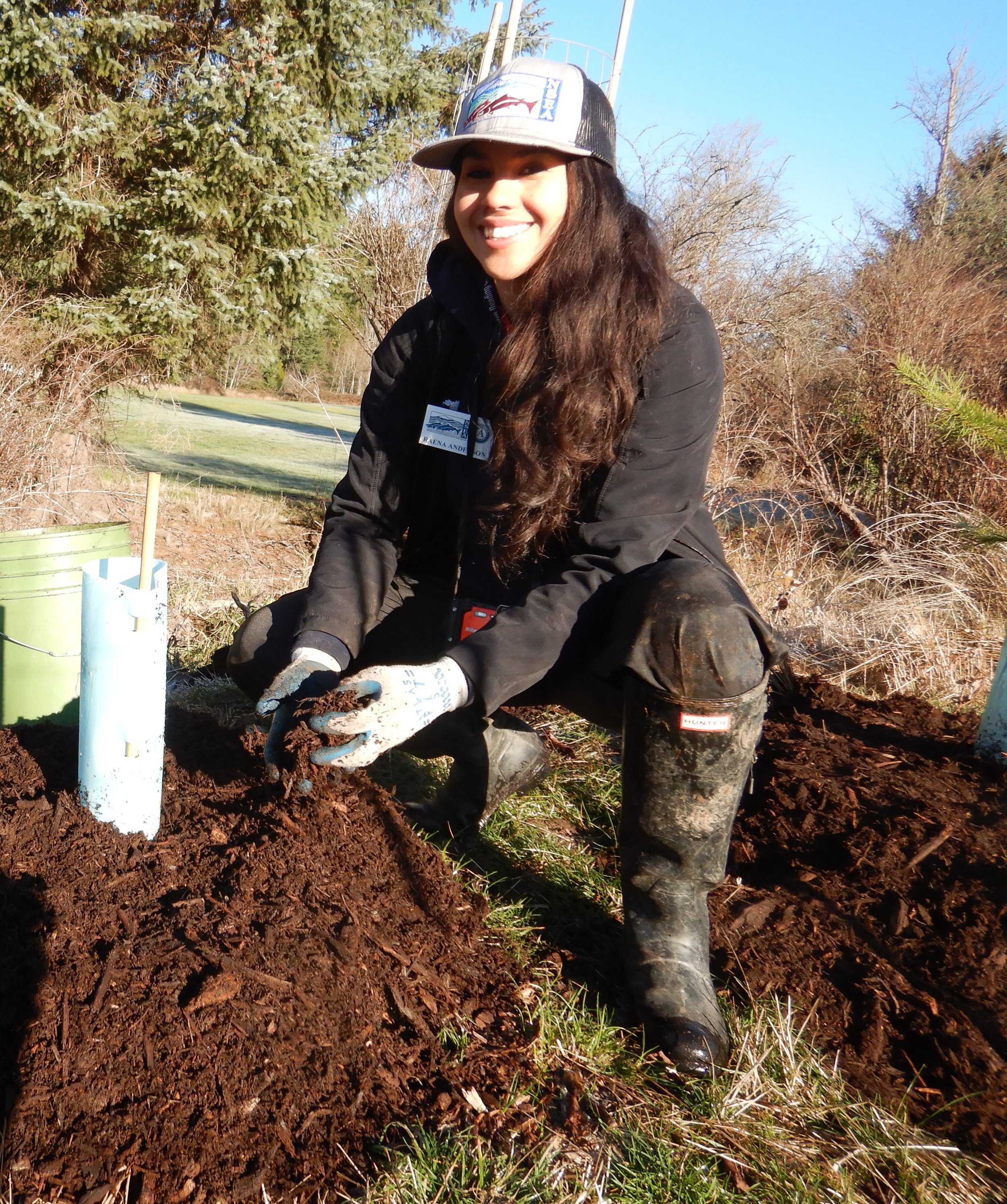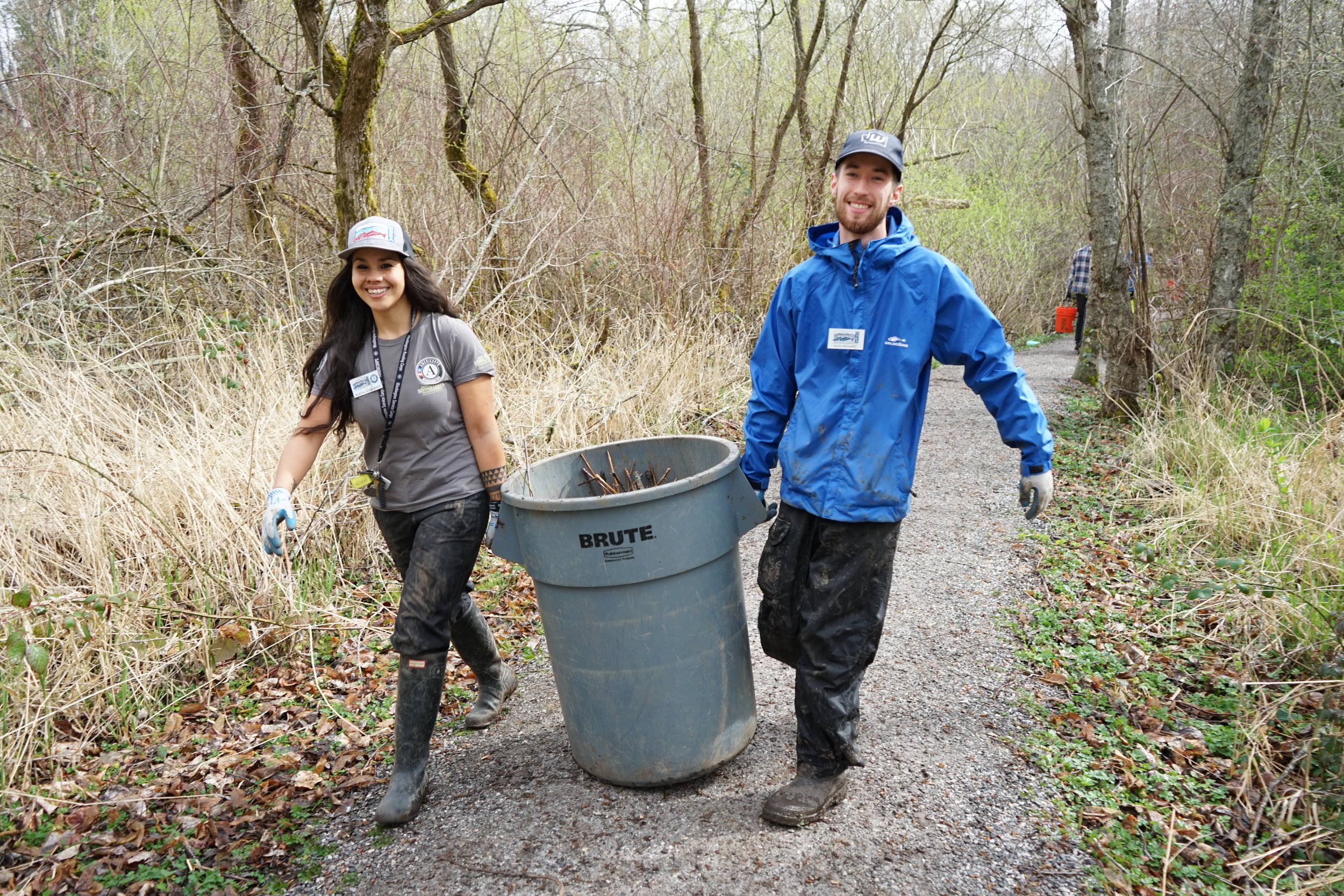Raena Anderson
Project Coordinator, 10,000 Years Institute
30 for Thirty #17
My name is Raena Anderson, and I’m a Project Coordinator with the 10,000 Years Institute where I coordinate invasive plant species management and applied science across Washington’s coastal watersheds. I also serve on the Board of Directors for a sister Regional Fisheries Enhancement Group, Pacific Coast Salmon Coalition. While the Olympic Peninsula’s West End community, environmental stressors, and restoration strategies may be different than Bellingham and Whatcom County at-large, we can all agree that salmon are critical to our communities and environment, and we need sustainable salmon runs.
I attended my first NSEA community work party as part of an assignment for an ecological restoration course at Western Washington University. The objectives: plant native trees and shrubs and add mulch to protect those plants. In theory, I understood that native plants were important for the environment– they filter the storm water, provide shade and nutrient inputs into streams, and overall improve water quality and salmon habitat—but before this day, I had not participated in active restoration efforts. I loved seeing the physical difference we were making and seeing others in our community working together for a worthy cause. Needless to say, I was hooked, and I continued volunteering at NSEA work parties, as my work and school schedule would allow.
After I graduated, I looked for ways to become even more involved and my search led me to an internship with NSEA as Stream Steward. Through this internship, I got a glimpse of what goes on behind the scenes of these work parties: the equipment packing, transportation, set-up, take-down, and cleaning; volunteer leadership, including, safety talks, planting demonstrations, and team building; and the sharing of knowledge, experience, and gratitude. The amount of work a group of volunteers can complete never seized to amaze me. Seeing those changes and working with volunteers made the early mornings and long Saturday’s worth it.
Before I knew it, the Stream Steward internship was over. During my final evaluation my supervisor and I discussed her AmeriCorps service, and I was inspired to apply to NSEA’s AmeriCorps positions. I served two AmeriCorps terms at NSEA, once as a Volunteer Coordinator and the second term as an Environmental Stewardship Coordinator. During this time, I learned the importance of stewardship – how people feel more connected and care more deeply for their place if they work to make it better. I learned how the trees we plant today along a grassy field can turn into a forest within a lifetime. I gained skills I use to this day (how to develop outreach materials, how to recruit and manage people, how to engage the disengaged) and received invaluable career advice from generous staff, board members, and volunteers.
While I may be nearly 200 miles away from NSEA, the lessons and skills I learned and connections that were made will stay with me into the future. We each have our part to play in salmon recovery and NSEA has helped me find mine.


